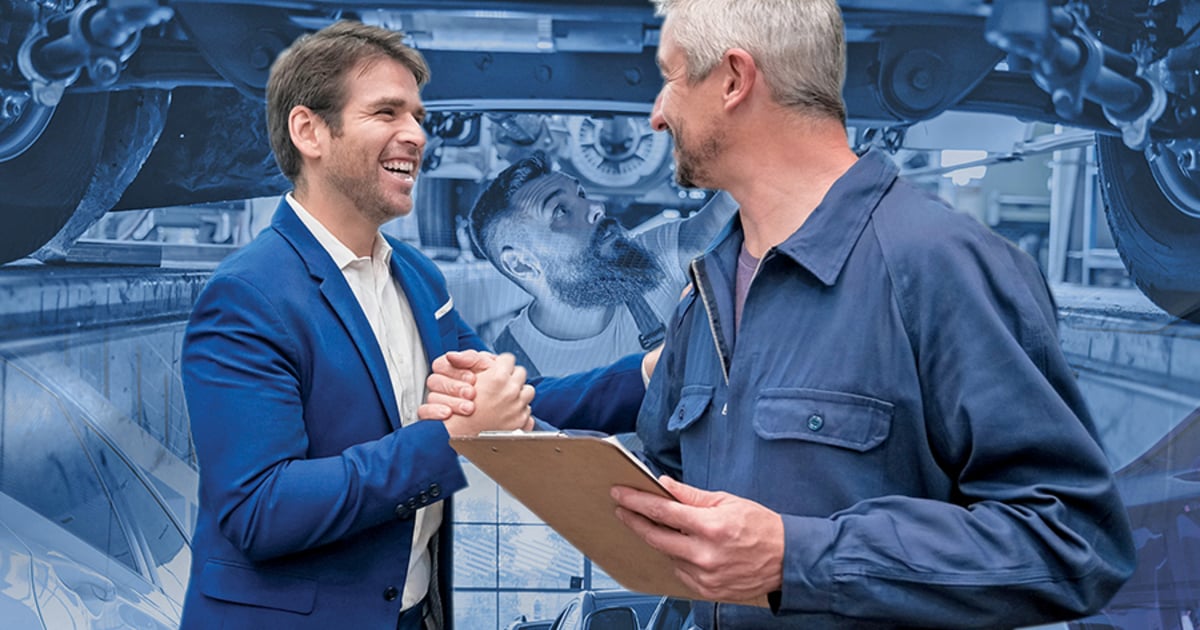
Two myths undercut the long-term profitability of dealerships.
Myth #1: That which is good for the customer is bad for profit.
Myth #2: That which is good for one department is bad for others.
Rather than advancing profitability, these myths—both of which feed upon the common yet counterproductive, zero-sum mentality of competition over collaboration — drive behaviors and decision making that undercut both the health and wealth of dealerships.
For example, imagine a service manager and a salesperson compete to greet a customer. The service manager accuses the salesperson of stealing work from the service department.
Then, when the customer asks for a ride back to their office, the service manager asks the sales manager if a member of the sales team could make the run. The sales manager tells him no way, adding that he can’t risk a customer walking in while his guy is out running errands for the dealership.
Examples like these point to a widespread and persistent problem in the industry: failure to work collaboratively across departments to meet customers’ needs. Poor collaboration within the dealership leads to dissatisfied and disloyal customers. This, in turn, leads to less profitability over the long term.
What’s a dealership to do? The answer: build a culture that centers on cross-departmental collaboration to address customers’ needs.
When cross-departmental collaboration is working well department leaders ask, “Why can’t we … ?” rather than asserting “Why we can’t.” At all levels of the organization, team members look for opportunities to improve the lives of customers. They smooth the pathway for others in the organization regardless of their home department to do their job better, more quickly or with more joy — knowing all these qualities contribute positively to customers’ experience.
While cross-departmental collaboration may sound good in theory, it can be challenging to create in practice. In addition to entrenched attitudes and practices, siloed departmental structures and a lack of cross-department interaction result in a lack of knowledge about others’ work.
For example, team members may use department-specific jargon, follow department-specific workflows and prioritize department-specific outcomes. Individuals from different departments may work within different constraints, see different risks and opportunities and anticipate different downstream consequences.
While each of these factors creates friction in cross-department collaboration, the financial interests of dealerships are well-served by investing the time and effort necessary to overcome these predictable and navigable challenges.
Here are three simple, no-cost strategies leaders can deploy right now to nudge the culture of collaboration:
First, create opportunities for everyone to learn what different departments do and what they care about. Invite a manager from another department to talk with your team about what their department does or to workshop a solution to a challenge or perhaps unpack some piece of jargon. Better yet, hold all-team meetings regularly to help bust silos and drive interpersonal connection among individuals and teams.
Second, notice and celebrate instances of cross-department collaboration that served a customer’s interest. If a customer in line for the service desk spills a coffee and someone from finance runs over to help with the cleanup as someone else from sales brings a fresh cup, name what this is: an example of your team making it their collective business to take good care of customers. Likewise, when a customer sings the dealership’s praises, share that feedback with the team and make clear the role collaboration played in making that happen. As every parent, pet owner and teacher knows — what gets rewarded gets repeated. To generate more collaboration: see it, name it, celebrate it.
Third, cultivate collaborative mindsets. To break out of the zero-sum thinking that drives noncollaborative behavior, encourage everyone on the team to see their work from a more collaborative angle. In leadership meetings, 1-on-1s with team members or even on the bulletin board in the break room, ask questions to nudge the collaborative mindset. These can include:
In what ways are our respective goals aligned?
What is the cost of inaction?
What is the potential return on investment both now and in the long term?
What do we stand to learn from people in other departments by working together (e.g., new perspectives, new skills, sector know-how)?
In what ways might a deeper relationship with these departments provide value to our customers?
When everyone in the dealership focuses on collaboratively serving the customer rather than on departmental turf battles and self-interest, customers win and dealerships thrive.